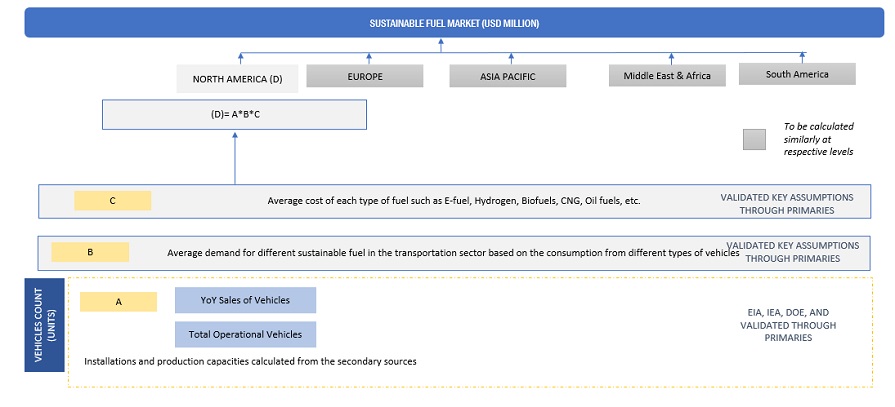Sustainable Fuel Market, Outlook 2029
The sustainable fuel market is expected to reach USD 299.9 billion by 2029, up from an anticipated USD 193.8 billion in 2024, at a CAGR of 9.1% over the forecast period. Governments throughout the world are enacting stronger environmental restrictions and policies to encourage the use of renewable energy. The fluctuating costs of traditional fossil fuels provide an economic incentive to invest in more stable and predictable sustainable fuel alternatives. Companies are increasingly adopting sustainable fuels as customer knowledge and demand for ecologically friendly products rise. Many businesses are establishing aggressive sustainability goals, such as using renewable fuels to satisfy their environmental obligations are few of the major drivers anticipated to propel the growth of the market.
Key Market Players
Prominent companies in this market include ADM (US), Shell plc (UK), Saudi Arabian Oil Co. (Saudi Arabia), Siemens Energy (Germany) and Chevron Corporation (US).
Download PDF Brochure: https://www.marketsandmarkets.com/pdfdownloadNew.asp?id=68114533
This report segments the sustainable fuel market based on the End user- Road transportation, Marine and Aviation. Based on State – Gas and Liquid. Based on type – Low carbon fossil fuels and renewable fuels and based on fuel type – Biofuel, Biomethane, Hydrogen, CNG and e-fuels.
Based on Fuel type, the sustainable fuel market is segmented into five types of fuels: Biofuels, Biomethane, Hydrogen, Compressed Natural Gas (CNG) and e-fuels. Among them, the Biofuels will be the largest segment. Biofuels are viewed as a greener alternative to fossil fuels, as they reduce GHG emissions significantly and contribute to climate change mitigation. This environmental benefit is a major driver of their expansion. Furthermore, biofuels help to reduce dependency on imported fossil fuels, so improving national energy security. Countries may mitigate the risks of oil price volatility and geopolitical crises by diversifying their energy sources. Furthermore, growing prices for traditional jet fuels encourage the aviation industry to look for more cost-effective and sustainable options, driving demand for aviation biofuel.

This report segments the sustainable fuel market based on state into 2 categories: Gas and Liquid. The gas segment is expected to be the fastest-growing segment in the sustainable fuel market. To reduce greenhouse gas emissions, governments throughout the world are implementing stricter environmental restrictions. This legislative drive promotes the use of cleaner alternatives such as biomethane, CNG, and hydrogen, which benefits the gas category in the sustainable fuel market. Furthermore, advances in gas generation, storage, and distribution technologies have considerably enhanced the efficiency and viability of renewable gases such as biomethane and hydrogen. alternative developments cut prices while increasing the usefulness of alternative fuels. Furthermore, sustainable gasses improve energy security by lowering reliance on imported fossil fuels. Diversifying the energy mix with local and renewable gas sources helps to stabilize energy supply and costs, which encourages their use.
Request Sample Pages of the Report: https://www.marketsandmarkets.com/requestsampleNew.asp?id=68114533
Based on End Users, the sustainable fuel market is segmented into 3 categories: Road transportation, Marine, and Aviation. The Road transportation segment is anticipated to grow as the largest segment in the sustainable fuel market. To combat climate change and reduce carbon emissions, nations are enacting strict environmental regulations. This supports the use of cleaner fuels in road transportation, such as biofuels, biomethane, CNG, hydrogen, and e-fuels, to meet emission targets. Furthermore, continual developments in fuel technology, such as improved hydrogen fuel cells and more efficient biofuel manufacturing processes, increase the viability and performance of sustainable fuels in road transportation. These advancements reduce costs and improve fuel efficiency, making them more appealing to both consumers and businesses.


